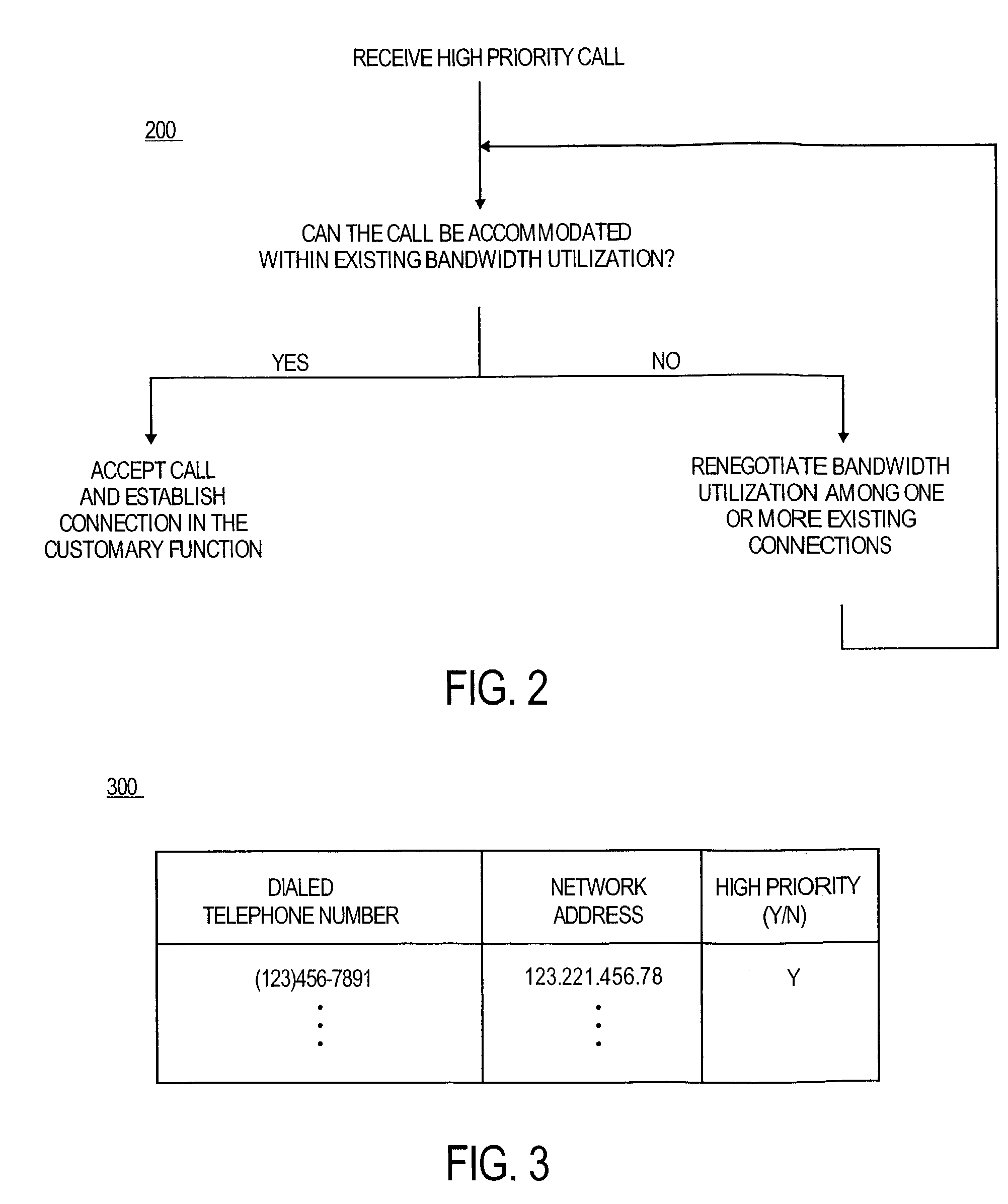Method for supporting high priority calls on a congested WAN link
a wan link and high priority technology, applied in the field of resource allocation, can solve the problems of congested, limited time period, and implementation of costly dsp resources at the nodes, and achieve the effect of less bandwidth
- Summary
- Abstract
- Description
- Claims
- Application Information
AI Technical Summary
Benefits of technology
Problems solved by technology
Method used
Image
Examples
Embodiment Construction
[0016]Described herein is a method for accommodating high priority calls on a congested communication link of a wide area or other communication network. In the following discussion, examples of specific embodiments of the present invention are set forth in order to provide the reader with a through understanding of the present invention. However, many of the details described below can be accomplished using equivalent methods or apparatus to those presented herein. Accordingly, the broader spirit and scope of the present invention is set forth in the claims that follow this detailed description and it is that broader spirit and scope (and not merely the specific examples set forth below) that should be recognized as defining the boundaries the present invention.
[0017]The basic mechanism adopted in the present invention is easily understood with reference to FIG. 2. Process 200 describes a bandwidth renegotiation scheme for accommodating high priority calls over otherwise congested ...
PUM
 Login to View More
Login to View More Abstract
Description
Claims
Application Information
 Login to View More
Login to View More - R&D
- Intellectual Property
- Life Sciences
- Materials
- Tech Scout
- Unparalleled Data Quality
- Higher Quality Content
- 60% Fewer Hallucinations
Browse by: Latest US Patents, China's latest patents, Technical Efficacy Thesaurus, Application Domain, Technology Topic, Popular Technical Reports.
© 2025 PatSnap. All rights reserved.Legal|Privacy policy|Modern Slavery Act Transparency Statement|Sitemap|About US| Contact US: help@patsnap.com



